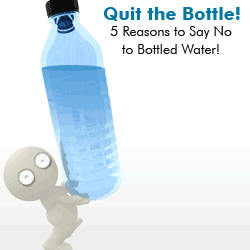
Water is not only man's most vital compound, a key component of the oxygen we breathe, to say the least, but it is also one of man's strangest compounds when looked at from a molecular viewpoint.
Water is polar and contains hydrogen bonds between its molecules which makes it indispensable for life. Water is a unique chemical. We may not think much about it, but it is absolutely fundamental to our life and life on our planet. For a molecule of its size and simplicity, its properties are almost miraculous. Only by understanding its molecular structure can we explain its unique behavior.
Dihydrogen Monoxide is a systematic name for water would be dihydrogen monoxide because each molecule is made up of two hydrogen atoms bonded to an oxygen atom (H2O). An oxygen atom has six electrons in its outer shell, four of them are in two pairs and two are single. The spare electrons can pair up with the single electron in hydrogen, forming two covalent bonds. There are four pairs of electrons around the oxygen atom, two of which are bonds with hydrogen atoms which are just an electron and a proton. The four pairs arrange themselves so that they are as far away from each other as possible, which is in a tetrahedral shape.
What about Polar Molecules? The water molecule, therefore, has an oxygen atom with the hydrogen atoms on either side but not in a line, they are at a 107.5-degree angle. The other side of the oxygen atom has two lone electron pairs, which make that side of the molecule negatively charged. The hydrogen atoms are positively charged because of a property called electronegativity. This simply means the amount that an atom pulls at electrons. Oxygen has higher electronegativity than hydrogen, so the electrons are pulled away from the hydrogen atoms, making them slightly positive.
What do Hydrogen Bonds have to do with anything? So a water molecule is small but quite polar. This is what gives it such strange properties. Water molecules form very weak bonds with each other. These bonds are called hydrogen bonds and are a result of the attraction between the positive hydrogen atoms and the negative oxygen atoms of a neighboring molecule. This means that water is liquid at room temperature, whereas other similar-sized molecules are gas at the same temperature. The hydrogen bonds hold the water together more.

Water ...a Polar Solvent? Another important property of water is its ability to dissolve many other chemicals. When an ionic solid such as salt or copper sulfate is put in water, there are both positive and negative ions on the surface of the solid. In salt, for example, there are positive sodium ions and negative chloride ions. Water molecules that are close to the solid surface are attracted to the ions. The negative oxygen atoms surround the positive sodium ions and pull them away from the solid into the solution; the positive hydrogen atoms do the same with the chloride ions.
Why does ice float? The final interesting property that we shall deal with in this article is that ice floats. This should not happen because normally when a liquid becomes a solid the solid is denser than the liquid and sinks. This is not the case in ice, because of the hydrogen bonds. In liquid, the hydrogen bonds are being made and broken constantly. In ice, however, the water molecules form a regular structure based on the hydrogen ions, and they are held slightly further apart than has been the case in the liquid. This makes ice less dense and floats. One interesting result of this property can be seen in ponds and lakes. Ice forms on the surface and the densest water at the bottom of the pond is at 4 degrees centigrade, so fish and other water dwellers are not frozen to death. These properties of water make it so useful to life. We need water to be a liquid at room temperature because many of the body's systems are water-based. We need water to be a polar solvent so that the important nutrients we need can be dissolved in it.



